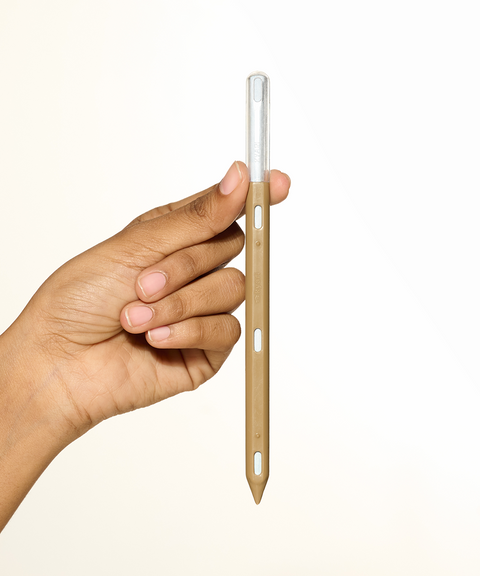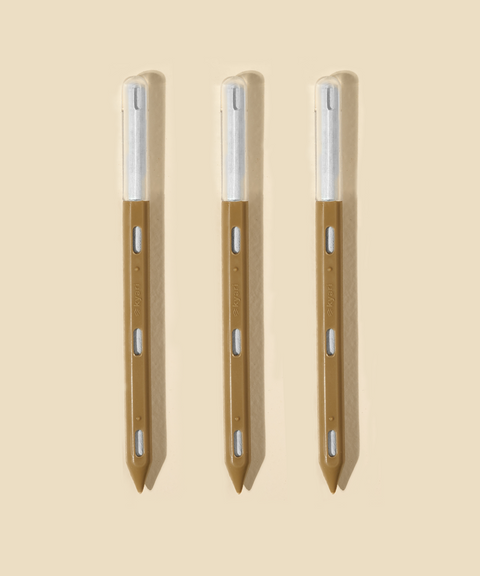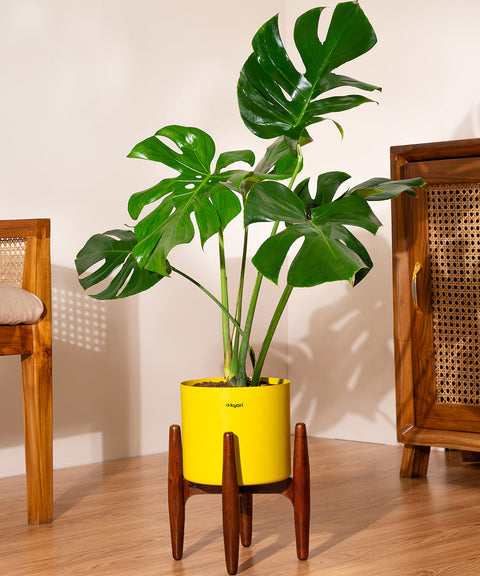About
Black Rubber
The Rubber Plant, with its broad, glossy leaves and striking presence, is a bold addition to any indoor space. This hardy plant is known for its air-purifying qualities and elegant appearance
Origin
Native to Southeast Asia, particularly India and Malaysia
Light
Prefers bright, indirect light but can tolerate low light conditions. Direct sunlight can cause the leaves to scorch. Rubber Plants are versatile and can adapt to various light environments, though they thrive best in well-lit areas

Water
Water when the top inch of soil feels dry. The Rubber Plant prefers evenly moist soil but is susceptible to root rot if overwatered. Adjust watering frequency based on light exposure and indoor climate
Humidity
Thrives in average household humidity but appreciates occasional misting. The Rubber Plant can adapt to varying humidity levels, making it versatile for different indoor environments
Did you know the rubber plant was once a key player in the production of natural rubber? Before synthetic rubber took over, these plants were like botanical superheroes, providing the material for everything from tires to boots. Today, your rubber plant might not save the world, but it sure will clean your air and look super while doing it!
Placement
The Rubber Plant is known for its bold energy and air-purifying qualities. Here’s where to place it
Adds a touch of greenery and improves air quality. Position it near a window with indirect light to showcase its glossy leaves.
Enhances focus and reduces stress. The presence of a Rubber Plant can create a more serene and productive workspace
Promotes a restful sleep environment by purifying the air. A Rubber Plant in the bedroom can help create a calming atmosphere
Frequently Asked Questions
The ideal temperature for a Rubber Plant is between 60°F to 80°F (16°C to 27°C). It prefers warm stable temperatures and should be protected from cold drafts
Water your Rubber Plant when the top inch of soil feels dry. Adjust the frequency based on light exposure and indoor climate ensuring the soil remains evenly moist but not soggy.
Rubber Plants prefer bright indirect light but can tolerate low light conditions. Avoid placing them in direct sunlight to prevent leaf scorch
Place your Rubber Plant in a bright indirect light area such as the living room or office. They thrive in well-lit areas but can adapt to lower light conditions
Trim off any dead or yellowing leaves and ensure the plant is free from dust. Regular cleaning helps the plant photosynthesize effectively and keeps it looking its best.
Yellowing leaves can be caused by overwatering or poor drainage. Improve drainage and reduce watering.
Brown leaf tips indicate low humidity or underwatering. Increase humidity and ensure consistent watering.
Keep the plant clean by wiping the leaves and inspecting regularly for pests. Use insecticidal soap if necessary. Rubber Plants can be susceptible to spider mites and mealybugs.
Drooping leaves can be caused by underwatering or overwatering. Adjust watering schedule to ensure soil is evenly moist but not soggy.
Yellow leaves can indicate overwatering. Allow the soil to dry out between waterings and ensure the pot has adequate drainage








 Limited Time Deal
Limited Time Deal
 BYOB - Small Plants
BYOB - Small Plants































































































